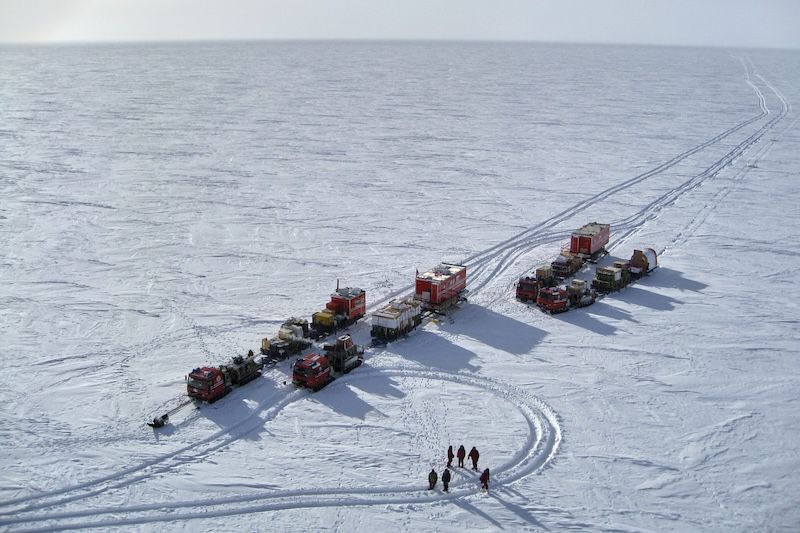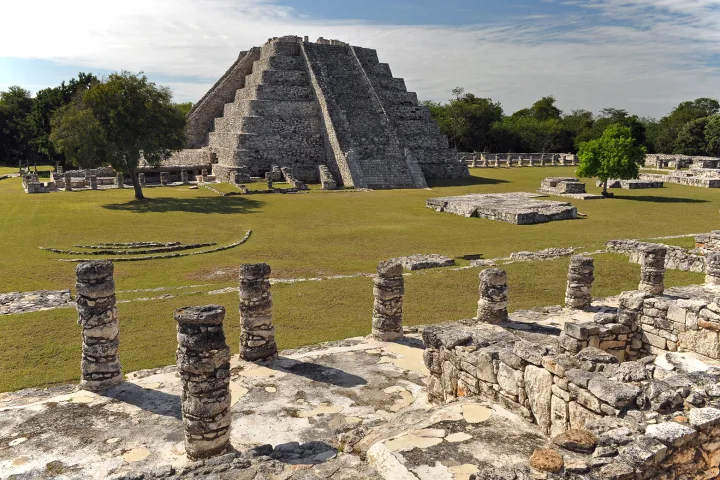From the burning of fossil fuels and fireplaces to contaminated dust from mining, human activity is changing the Earth’s atmosphere in countless ways. Records of these events over time are preserved in permanent polar ice, which acts as a time capsule, allowing scientists and historians to link Earth’s history to the history of human societies. In a new study, Antarctic ice cores show that lead and other toxic heavy metals linked to mining activities polluted the Southern Hemisphere as early as the 13th century.
“It is quite amazing to see evidence that early Andean cultures 800 years ago and later Spanish Colonial mining and metallurgy caused detectable lead pollution 9,000 km away in Antarctica,” says Joe McConnell, lead author of the study.
- About 5.5 tons of water containing radioactive material leaked from Fukushima
- European Commission Proposes to Cut EU’s Greenhouse Gas Emissions by 90% by 2040
This is the first time scientists have assessed human impacts on lead pollution in Antarctica as far back as 2,000 years ago. This is also the first detailed assessment of thallium, bismuth and cadmium pollution. In addition to lead, these heavy metals (except bismuth at low levels) are considered highly toxic and harmful to human and ecosystem health.
The team found that the first increase in heavy metal pollutants (especially lead) began around 1,200, coinciding with the establishment of urban communities by the Chimú people on the north coast of South America.
“These settlements required large quantities of silver and other metals obtained through mining,” says Charles Stanish, co-author of the study.

Lead is commonly found in silver ores, and samples from lake sediments in the Potosí region of Bolivia show lead emissions during the 12th and 13th centuries, consistent with Antarctic ice records.
More permanent and consistent pollution began shortly after the arrival of Spanish settlers to South America in 1532. Potosí became the Spanish Empire’s primary source of silver and the largest single source of silver in the world.
Ice records show a marked decline in lead pollution between about 1585 and 1591, when severe epidemics ravaged Andean communities. The team was able to compare silver records from the Colonial Mint in Potosí with ice core data and found that they were consistent with the Antarctic pollution decline.
“It’s quite amazing to see how a 16th century outbreak in Bolivia changed pollution in Antarctica and the Southern Hemisphere,” says study co-author Sophia Wensman.
“Although Antarctica’s remote location, thousands of kilometers from South America and Australia, means that only trace amounts of pollutants accumulate and are preserved in the ice, precisely dated annual records can provide insight into how and when anthropogenic pollutants impacted the entire hemisphere,” says Andreas Stohl, another co-author of the study.
As expected, contamination increased significantly following industrialization, with large increases seen at the start of Australian lead mining in the late 19th century. There are also marked declines in the records for both the World Wars and the Great Depression, indicating the worldwide impact of industrial activity and political events in the Northern Hemisphere.
The study was conducted by analyzing five different ice cores extracted from the East Antarctic ice sheet at the Ice Core Laboratory, a unique facility with instruments that can detect trace amounts of metals in ice and snow.

McConnell and his team have been refining their techniques for decades to advance scientific understanding of how humans have affected Earth’s atmosphere over time, and to track historic pandemics and wars using changes in Greenland pollution levels.
“We are probably the only research group in the world that routinely makes these kinds of very detailed measurements, especially in Antarctic ice, where concentrations of these trace metals are extremely low,” says study co-author Nathan Chellman.
Thanks to these advances, this study offers a deeper look into history than was previously possible. Previous studies were unable to identify heavy metal pollution before the industrial age, as it was impossible to distinguish between metals produced by volcanic eruptions and those produced by human activities. For this study, the team used thallium levels recorded in ice to estimate and infer volcanic background levels of lead, bismuth and cadmium. This allowed them to determine when anthropogenic pollution began and its extent.
“We found that lead, bismuth and cadmium levels increased much more after industrialization. But thallium actually didn’t change at all, suggesting that there was little or no human emission of thallium. And that’s what allowed us to use it as an indicator of volcanism over the last 2,000 years.”
McConnell says he and his team hope to use the techniques developed in this study to improve understanding of pre-industrial pollution levels in the Arctic, where mining and metallurgy were evident much earlier in human history than in South America.
Desert Research Institute. 11 Ocak 2024.
McConnell, J. R., Chellman, N. J., Wensman, S. M., Plach, A., Stanish, C., Santibáñez, P. A., … & Stohl, A. (2024). Hemispheric-scale heavy metal pollution from South American and Australian mining and metallurgy during the Common Era. Science of The Total Environment, 912, 169431.





